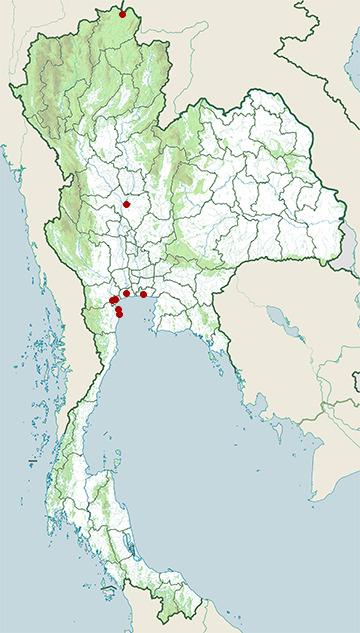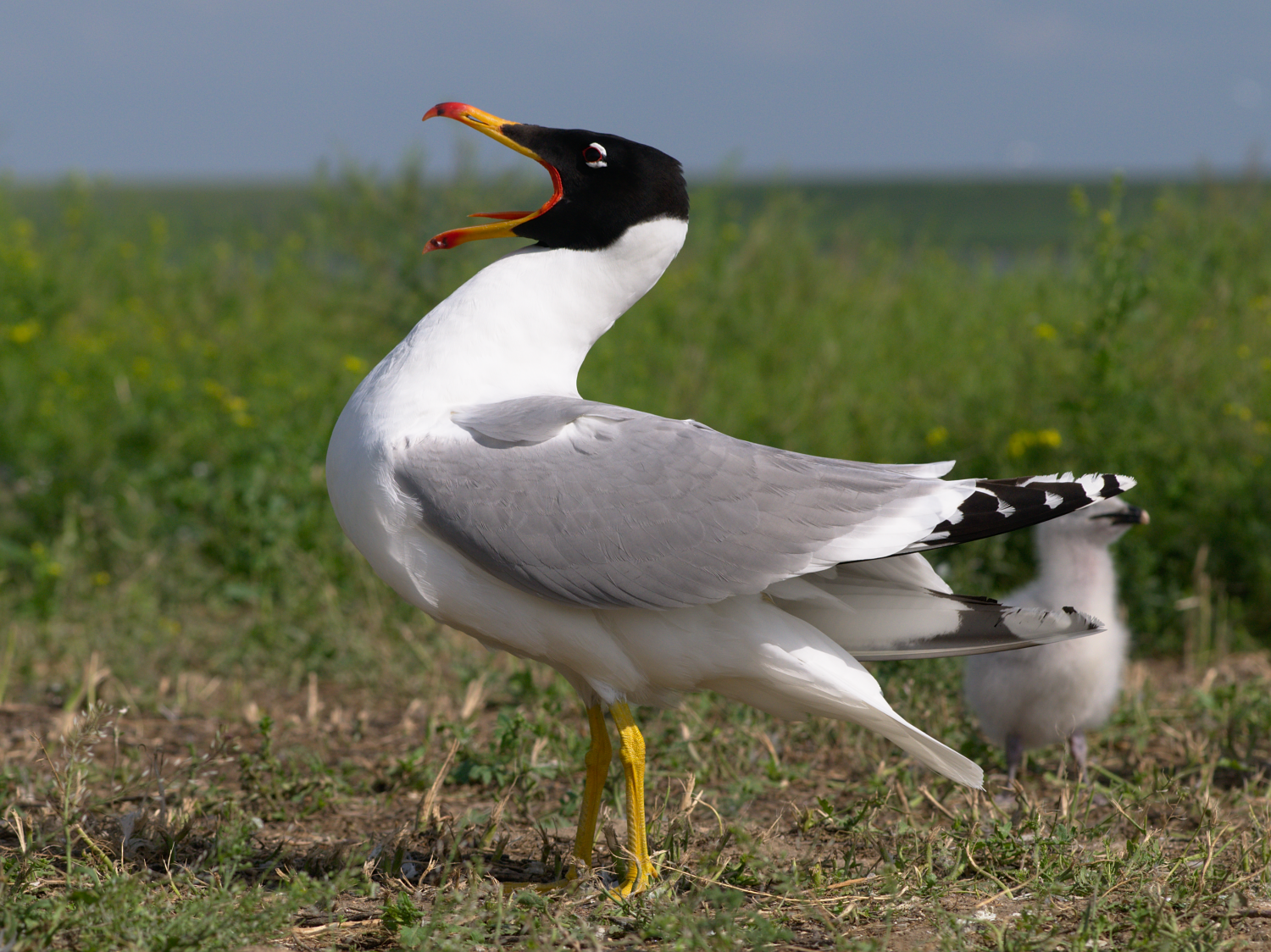Species of Thailand
Pallas's gull
Ichthyaetus ichthyaetus
Peter Simon Pallas, 1773
In Thai: นกนางนวลหัวดำใหญ่
Pallas's gull (Ichthyaetus ichthyaetus), also known as the great black-headed gull, is a large bird species. As is the case with many gulls, it has traditionally been placed in the genus Larus. The scientific name is from Ancient Greek. Ichthyaetus is from ikhthus, "fish", and aetos, "eagle".
Distribution
This species breeds in colonies in marshes and islands from southern Russia to Mongolia. It is migratory, wintering in the eastern Mediterranean, Arabia and India. This gull nests on the ground, laying between two and four eggs.
It occurs in western Europe only as a rare vagrant. In Great Britain a recent review left a single occurrence in 1859 as the only acceptable record of this bird. The species also occurs as a vagrant in differing parts of the Indian Ocean, south of its normal range, and along the northern and eastern coasts of Africa, where it visits annually on an irregular basis.
Description
This is a very large gull, being easily the world's largest black-headed gull and the third largest species of gull in the world, after the great black-backed gull and the glaucous gull. It measures 55 - 72 cm in length with a 142 to 170 cm wingspan. Weight can vary from 0.96 - 2.1 kg, with an average of 1.6 kg in males and 1.22 kg in females. Among standard measurements, the wing chord is 43.5 to 52 cm, the bill is 4.7 to 7.3 cm and the tarsus is 6.5 to 8.4 cm. Summer adults are unmistakable, since no other gull of this size has a black hood. The adults have grey wings and back, with conspicuous white "mirrors" at the wing tips. The legs are yellow and the bill is orangey-yellow with a red tip.
In all other plumages, a dark mask through the eye indicates the vestiges of the hood. The call is a deep aargh cry. Young birds attain largely grey upperparts quite rapidly, but they take four years to reach maturity.
Ecology
This bird has a deep, rather nasal flight-call which resembles the call of the lesser black-backed gull. Although they are noisy at colonies, Pallas's gulls are mostly silent when breeding.
These birds are predatory, taking fish, crustaceans, insects and even small mammals.
The Pallas's gull is one of the species to which the Agreement on the Conservation of African-Eurasian Migratory Waterbirds (AEWA) applies.
This article uses material from Wikipedia released under the Creative Commons Attribution-Share-Alike Licence 3.0. Eventual photos shown in this page may or may not be from Wikipedia, please see the license details for photos in photo by-lines.
Category / Seasonal Status
Wiki listed status (concerning Thai population): Very rare winter visitor
BCST Category: Recorded in an apparently wild state within the last 50 years
BCST Seasonal status: Non-breeding visitor
Scientific classification
- Kingdom
- Animalia
- Phylum
- Chordata
- Class
- Aves
- Order
- Charadriiformes
- Family
- Laridae
- Genus
- Ichthyaetus
- Species
- Ichthyaetus ichthyaetus
Common names
- Thai: นกนางนวลหัวดำใหญ่
Synonyms
- Larus ichthyaetus
Conservation status

Least Concern (IUCN3.1)
Photos
Please help us review the bird photos if wrong ones are used. We can be reached via our contact us page.
Range Map

- Amphawa District, Samut Songkhram
- Bang Pu Recreation Centre
- Bueng Boraped Non-Hunting Area
- Chiang Saen District, Chiang Rai
- Laem Pak Bia
- Mueang Samut Sakhon District, Samut Sakhon
- Mueang Samut Songkhram District, Samut Songkhram
- Pak Thale
